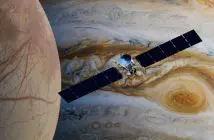
The 2022-23 Budget has outlined $1.16 billion to 2038-39 and $38.5 million per annum ongoing for the first phase of a National Space Mission for Earth Observation, which will see Australia design, build, and operate four new satellites.
Led by the Australian Space Agency, Minister for Science and Technology Melissa Price said this was the most significant investment ever made in Australia’s civil space sector.
“The information we get from Earth observation satellites is central to our everyday life – from forecasting the weather and responding to natural disasters through to managing the environment and supporting our farmers,” Minister Price said.
It is estimated the project will create more than 500 jobs over the first four years of the build phase, with an anticipated supplier network of more than 100 companies from across Australia.
The National Space Mission will be led by the Australian Space Agency in partnership with Geoscience Australia, CSIRO, the Bureau of Meteorology and Defence.
The Budget also includes:
- $65.7 million over five years from 2021-22 to set the conditions for rocket launch from Australia and fast track the launch of space assets and research projects by Australian businesses and researchers;
- $12.1 million over five years from 2021-22 (and $0.3 million per year ongoing) to remove cost recovery requirements under the Space (Launches and Returns) Act 2018 and undertake a regulatory reform program to streamline interactions with industry;
- $9.5 million over two years from 2021-22 to develop a Space Strategic Update to provide direction on future funding opportunities and align Australia’s space efforts;
- $3.0 million in 2022-23 to extend the International Space Investment initiative and continue building relationships with international space agencies; and
- $25.2 million to expand the International Space Investment initiative and provide funding for Australian businesses and research organisations to work on projects with the Indian Space Research Organisation and the broader Indian space sector.
The Budget also includes $37.4 million to 2025-26 to establish a new CSIRO Research Translation Start program to build further cooperation between our researchers and industry and supercharge their commercialisation journeys.
The Government is investing $63.6 million to 2025-26 and $1.5 million per annum ongoing to further support the important work of the Australian Institute of Marine Science (AIMS), including funding to remediate AIMS’ wharf at Cape Cleveland, south of Townsville, Queensland.
The Budget also includes:
- $33.4 million over two years from 2021 22 (including $14.4 million in capital funding) to the National Measurement Institute to deliver essential measurement standards and services that underpin business continuity and international trade;
- $5.3 million over two years from 2021 22 to improve the National Science and Technology Council’s provision of science and technology advice to the Government and to continue support of the Prime Minister’s Prizes for Science event;
- $4.7 million over four years from 2022 23 to continue support for the Women in STEM Ambassador initiative and the Future You national digital awareness raising initiative; and
- $2.0 million over four years from 2021 22 to extend the Superstars of STEM Program, to continue raising the profile of Australian women in STEM and inspire the next generation.
This year’s Budget builds on the Government’s investments of $12 billion for science, research, and innovation-related programs and activities in 2020-21 and $11.8 billion in last year’s Budget – the two largest ever single annual investments for the sector.
Other initiatives include:
- $42.4 million to grow the pool of women in STEM by providing up to 500 university scholarships, co-funded with industry.
- More than $450 million in funding for CSIRO to ensure the continuation of critical scientific research in a range of priority areas.
- More than $530 million from 2019-20 to 2024-25 for a wide range of ANSTO activities, including research, nuclear medicine production, asset maintenance and waste management.
- $124 million to make Australia a world leader in artificial intelligence through the AI Action Plan.
- More than $387 million in funding to meet Australia’s commitments as co-host of the Square Kilometre Array radio telescope.





